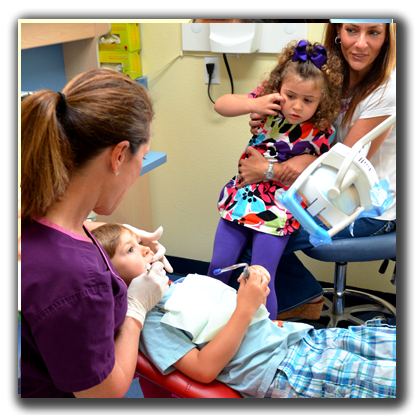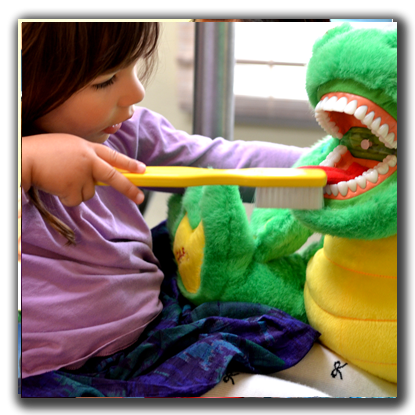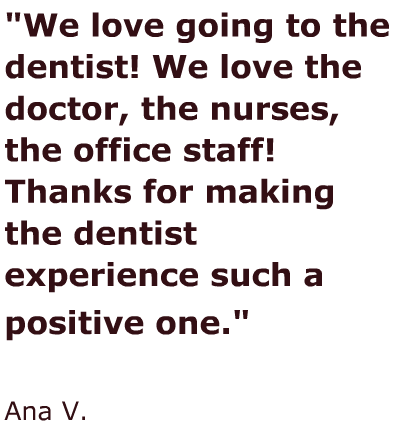Answers To Your Questions: Dental Information And Resources
All information is intended for your general knowledge only and is not a substitute for medical advice or treatment for specific medical conditions. You should seek prompt medical care for any specific health issues and consult your physician and dentist before starting any new treatment or making any changes to existing treatment. Do not delay seeking or disregard medical advice based on information on this site. Medical information changes rapidly and while we make efforts to update the content on the site, some information may be out of date. Use of information on this website is subject to the disclaimer and the terms and conditions.
1. How many teeth do we have?
Altogether, most people have a total of 20 primary teeth (baby teeth). They can start to erupt as early as six months of age and can continue to get their baby teeth until as late as 3 years of age. Starting at the age of 5 or 6, these baby teeth become loose and exfoliate (fall out), making room for the permanent teeth (adult teeth). A grown adult with all three sets of molars (including wisdom teeth) has 32 permanent teeth. Click below for details of the primary and permanent teeth devleopmental schedules.
2. Why do we need to take such good care of the baby teeth if they are going to fall out anyway?
Baby teeth are a vital part of your child’s overall health, growth, and development. They keep them for much of their childhood. Strong and healthy baby teeth are essential for developing speech and chewing food in the early years, and hold the space for the adult teeth that are growing underneath the gums. The front baby teeth do not usually fall out until 6 - 8 years of age, and the primary molars do not fall out until age 11 or 12 years. Decay in the baby teeth could mean a higher risk of decay in the adult teeth. If decay is severe, it can harm the child’s overall health and cause great discomfort, pain, or infection. It is also important for a child’s self esteem to be confident about their smile, and healthy teeth make a healthy smile.
3. Why is dental health so important?
Tooth decay is the number one chronic disease affecting young children in the United States; it is 5-times more common than asthma and 7-times more common than allergies. Tooth pain keeps children home from school and distracts them from learning. The American Academy of Pediatric Dentistry (AAPD) recognizes that the best way to decrease children’s tooth decay is by visiting a dentist early on, recommending that each child should have a dental visit by his or her first birthday.
A pediatric dentist is a specialist who is dedicated to bringing the best possible oral health care to patients from the time they are infants until the time they are ready to go to college! During the childhood years, these young patients need guidance through their growth and development, and sound advice on good habits and diet to avoid any future problems with their dental health.
Our dentists are highly qualified to meet the specialized needs of all children, each having completed two to three additional years of training in pediatric dentistry after completing four years of dental school. Additionally, Dr. Lin-Song, Dr. James, and Dr. Yu are all Board Certified by the American Board of Pediatric Dentistry, which means that they have shown exceptional proficiency in the specialty of pediatric dentistry and are subject to the Board’s ongoing evaluation and examination.
We will make your child feel comfortable and make certain the entire experience is as pleasant as possible. Occasionally, our patients may require treatment beyond preventive care, such as fillings or extractions. When this is the case, we know that your child’s comfort is paramount. That’s why we are experts in all aspects of gentle behavior management, including sedation anesthesia if necessary.
Lastly, our dentists are highly experienced and comfortable with treating patients with special physical, behavioral, and sensory needs, including the autism spectrum, ADHD, and developmental differences. We know in these special cases that creating the best experience possible and staying in close contact with all decision makers is incredibly important to you and to the health and well being of your child.
6. When does teething start?
Have you noticed that your baby is fussier than usual? He or she could be getting a cold or possibly beginning the teething process. With the lower teeth usually coming in first, teething typically begins at around 6 months of age. However, it is perfectly normal for teething to start anytime between 3 months and 12 months of age. By the time your baby is 3 years old, he or she will have all 20 primary teeth. That is quite an accomplishment! Click below for details of the primary and permanent teeth developmental schedules.
7. What are the symptoms of teething?
Teething can cause soreness and swelling in the gums as those baby teeth make their way through. Symptoms can start a few days before the tooth shows, and they may disappear as soon as the tooth erupts through the gum. This pain and swelling is what causes them to be more fussy and agitated, and as a result can raise their body temperature to slightly warmer than normal. Teething is a normal physiologic process. If your child has a fever or nasal congestion, it is not from teething. Many babies also drool excessively during this time, which can cause a rash on their skin and face from the saliva. You may also notice that your baby will want to bite more on their fingers and toys to help relieve some of the discomfort they feel in their gums. On some extreme occasions, babies may be picky or refuse to eat and drink for a couple of days. If your baby’s symptoms seem severe or do not subside, contact your child's pediatrician.
Here are some helpful tips that will help them get through the teething process:
- Rubbing: The American Academy of Pediatrics recommends rubbing your baby’s swollen, tender gums with a (clean) finger to provide soothing counterpressure. Your baby may cry and resist at first because it seems to hurt initially, but the counterpressure soon brings relief.
- Chewing: Teething babies love to chew, and for good reason: The gumming action provides counterpressure, which relieves the aching pressure of new pearly whites pushing up and out into the mouth. Provide safe objects for your baby to chew on, such as teething rings. Teethers come in many variations now, ranging from pacifier types for babies, to other types for older children finding discomfort in molars erupting. Silicone teethers are best and many can be placed in the refrigerator or freezer to be made cold and additionally aid in discomfort. A clean, cold, damp washcloth makes a great teether. Putting it in the freezer for a few minutes will additionally help in the relief to numb the gum.
- Cold food: Like icy food to suck on or chilled food to eat, such as yogurt, blended peaches, and applesauce (once they've already been introduced to your baby), can be more appetizing than warm or room-temperature foods, and can ease achy gums. Also frozen fruits like bananas and plums can be placed in a baby feeder mesh bag (so large chunks of gummed-off food can't pose a choking risk), but only under adult supervision and with baby sitting or propped upright.
- Cold drinks: A bottle of icy cold water can offer chilly relief to achy gums for babies over six months old (when water can be introduced), or, if baby doesn't take a bottle or balks at sucking, give (ice-free) water in a cup.
- Pain relief: If chewing, rubbing, and sucking chilly foods don't do the trick, you can give your baby a mild pain reliever that is labeled for their specific age. Acetaminophen may help relieve some of their discomfort for a longer length of time.
- Teething gel: Teething gels should be your very last resort for children under 2 — and only with a doctor’s okay. The main ingredient in most teething gels, liquids, and swabs is benzocaine, an anesthetic that the Food and Drug Administration (FDA) says can cause a “rare but serious” condition called methemoglobinemia.
First Visit
8. What to Expect at Your First Visit?
From the moment you call us for your child’s first appointment, we will make your child’s visit a pleasant one, establishing a relationship of trust and ultimately assisting you in developing necessary dental habits.
When you first arrive at our office, we will make your child feel welcome with a tour of the office. During this initial visit, our focus is on providing proper dental education and a comprehensive oral examination. We will recommend ways to protect your child’s oral health by evaluating habits, diet and use of fluoride. Our objective is to teach both you and your child how to properly clean and brush his or her teeth.
We may also choose to perform a professional cleaning, and provide a topical fluoride treatment. Also, if necessary, x-rays may be requested. If we find that your child requires treatment beyond a dental cleaning, we will discuss their treatment plan in detail with you, making sure you understand exactly what we recommend, what all your options are, and why.
9. How to prepare your child for his/her First Visit?
We find that young children typically feel best in the morning, so it is our policy to schedule their first appointment in the morning, ensuring they have the best experience possible. We recommend that you try to schedule your appointment early in your day, making sure your child is rested and feeling well.
It is also best to not overdo preparation, but rather to simply tell your child about the visit the night before, treating it like the highlight of the next day. (See our recommended books). Dressing up for the visit can also help increase the expectations of a pleasant experience, similar to other special events you may prepare them for. Overall, just be sure to talk about the visit in a positive, matter-of-fact way, as you would any important new experience. If you have any questions or concerns at all, please call our office. We are here to help make it pleasant for everyone.
10. Helpful Patient Forms.
For your convenience and to save time at the first appointment, click here
to review our patient forms. You may either fill out directly here on our website or download them and bring with you. Please note, you will be asked to sign them in person on the day of your first appointment. Thank you in advance for completing these with as much detail and accuracy as you can as they provide us with vital information about your child, allowing us to best serve him/her and you.
11. What are common dental problems?
- Tooth Decay
– By definition, tooth decay (cavities) occurs when bacteria in the mouth produce acids that erode teeth. Plaque, which is a sticky substance that contains bacteria, is constantly forming on your teeth and gums. As the bacteria feed from the sugars or carbohydrates in your mouth, they make potent acids. Over time, these acids destroy the enamel on teeth and cause cavities. If not treated, cavities lead to discomfort, pain, infection, and tooth loss. Most people can avoid decay by brushing and flossing their teeth regularly, avoiding foods high in starch and sugar content, and seeing their dentist for regular checkups and cleanings.
- Tooth sensitivity- Have you ever taken a sip of coffee or bit into an ice cream bar and winced from pain? There can be many causes of sensitive teeth, including decay, a cracked tooth, or tooth roots that are exposed due to gum recession. Our teeth have a strong layer of enamel, and underneath the enamel is a part of the tooth that is less dense called dentin. When the dentin loses its protective coating, heat, cold or air can over-stimulate the nerve cells and cause discomfort. Depending on the cause, treatment is often successful with several applications of desensitizing toothpaste or applying a fluoride gel to the affected area. When these treatments are unsuccessful, the dentist may recommend a more permanent measure such as a sealant or filling to cover the sensitive area.
- Gum Disease – Also called "periodontal disease," it is defined as inflammation and receding of the gums. If severe enough, gum disease can lead to loss of the soft and hard tissues that holds teeth in place, and ultimately loss of teeth. Plaque, the key player in tooth decay, is also the cause of gum disease with different types of bacteria. When not removed properly, plaque can harden around the gumline, causing the gums to pull away from teeth and forming pockets where more bacteria can collect. If left untreated, gum disease can lead to the following symptoms: swollen/bleeding gums, constant bad breath, pus between teeth and gums, and in advanced cases, teeth that are loose or moving away from one another.
- Canker sores vs. Cold sores – Painful and annoying, a mouth sore of any type can make eating and drinking for a week or two quite a challenge. Canker sores should not be mistaken for other mouth sores that are caused by viruses like the Cold sores. Here are the key differences and their treatments:
- Canker sores only appear inside the mouth (inside the cheek, under the tongue, or in the back of the throat.) They usually have a red edge and a gray center. They can be quite painful. Canker sores aren't contagious. They may happen if you have a viral infection. They may also be triggered by stress, food allergies, lack of vitamins and minerals, hormonal changes or menstrual periods. Sometimes trauma such as scratches, bites, or cuts in the mouth can also cause canker sores or further irritate an existing one. In some cases, the cause is unknown. The only treatment is to relieve its symptoms – they simply have to run their course of 7 to 10 days. Over-the-counter pain medication (Advil or Tylenol) or topical numbing agents or antimicrobial mouth rinses (ask your pharmacist) offer temporary but good relief. Also, avoiding spicy, hot, acidic, hard, or crunchy foods will keep the canker sore from getting further irritated and thus delaying the healing process.
- Cold sores, or fever blisters, are fluid-filled red blisters on the lips and skin around them. They are caused by various herpes viruses, are highly contagious, and are sometimes accompanied by a cold or flu with fever. Some people find a cold sore painful and others find the sores tingle, itch, or burn. Once a patient is infected with this virus, it “sleeps” in the nerve cells and “wakes up” when the body is stressed. Wind, sunlight, and fatigue can cause a flare up of the herpes virus. Unfortunately, there is no cure for cold sore. A sore will usually heal on its own without any scar within 12 days by blistering, breaking open, oozing fluid, and a scab formation. The oozing fluid stage is the most contagious as the liquid contains millions of infectious virus particles that can spread to other body parts or other people via skin contact or by sharing utensils, towels, or drinks. Thus, during the outbreak, prevent your child from scratching or picking at the sores. Antiviral medication in pills or ointment can speed healing and can be most effective in early stage of outbreak (before blistering). Over-the-counter topical anesthetics or antiviral agents provide good temporary relief of discomfort. Contact your pediatrician or pediatric dentist to arrange a visit. Avoid your child from eating foods that can further irritate the sore such as acidic, spicy, hard, or crunchy foods. Using sun block before being in the sun and lip balm for dry lips can help prevent such outbreaks.
Post Extraction Care
Make certain that your child continues to bite on the gauze pad for 20-30 minutes after leaving our office. The biting pressure on gauze pad stops the bleeding and allows better clotting. A slight oozing of blood for a day is normal. Call our office if there is any excessive bleeding. Avoid using straws and rinsing for one day. Doing so can disturb the clot and delay healing.
- Maintain a soft diet for the rest of the day (soups, pasta, eggs, oatmeal, yogurt, gelatin, puddings, apple sauce, soft cheeses, mashed potatoes are good examples). Avoid hot foods and anything with seeds.
- Be careful that your child does not accidentally bite or scratch the numb cheek. The numbness generally lasts one to two hours.
- Give acetaminophen (Tylenol) for any discomfort or pain.
- Gentle brushing and gentle rinsing with warm salt water (1tsp dissolved in an 8oz glass of water) can begin the morning following extraction. A clean mouth will heal more quickly. Continue the rinsing for several days and longer if there is a problem keeping the area clean.
- Please call our office if you have any questions or concerns.
Dental Emergency Instructions
Toothache.
Children can complain of pain in their teeth and gums for a variety of reasons. So that we can give you the best possible advice over the phone, it is best to evaluate your child first. Please take the following steps:
- Make sure that the area with pain is thoroughly cleaned. Do this by vigorously rinsing with warm salt water. Use dental floss to dislodge trapped food or debris and note any swelling or redness.
- If the face is swollen, or there is a blister on the gum above a tooth, contact us immediately. Acetaminophen can be given to relieve pain.
- As a rule, if your child is having difficulty eating or sleeping, we should see them as soon as possible.
Knocked Out Primary (Baby) Tooth. If your child has a fall or an accident where they have bumped their mouth hard enough to loosen or knock out a primary (baby) tooth, come to see us as soon as you can. We will take an x-ray of the area and check to make sure the permanent teeth were not affected by the trauma. We will NOT re-insert a knocked out baby tooth, but we will check the area to make sure that the entire tooth did come out, and that there are no residual pieces or foreign body left in the gum.
Knocked Out Permanent Tooth.
If your child knocks out a permanent (adult) tooth there are several crucial steps to take at the site of the accident that will greatly increase the chances of saving the tooth:
- Find the tooth and handle it only by the top (crown), not the root portion.
- You may rinse the tooth, but do not clean or handle it unnecessarily.
- Try to reinsert it in its socket. It doesn’t matter if it’s backwards. All it matters is that it’s in the socket and in its natural environment. If that is successful, have the child hold the tooth in place by biting on a clean gauze or cloth.
- If you cannot reinsert the tooth, transport the tooth in a cup containing
cold milk.
- See a dentist IMMEDIATELY! Time is a critical factor in saving the tooth! The best outcome is achieved when the tooth is treated within 60 minutes following the trauma.
- Place a cold compress or ice over the face if there is swelling or if the child has abrasions.
Broken Tooth. If your child breaks or chips a tooth in an accident:
- Locate and save any broken tooth fragments.
- At the site of the accident, rinse dirt from the injured area with warm water.
- Place a cold compress or ice over the face if there is swelling or if the child has abrasions.
- It is best to see the dentist as soon as possible. Call our office first at 415-668-3500.
- If it is after hours, ask the operator to connect you to the doctor on call.








